Easy Grass Alternatives for a Sustainable and Low Maintenance Lawn
By jessica • May 28, 2021
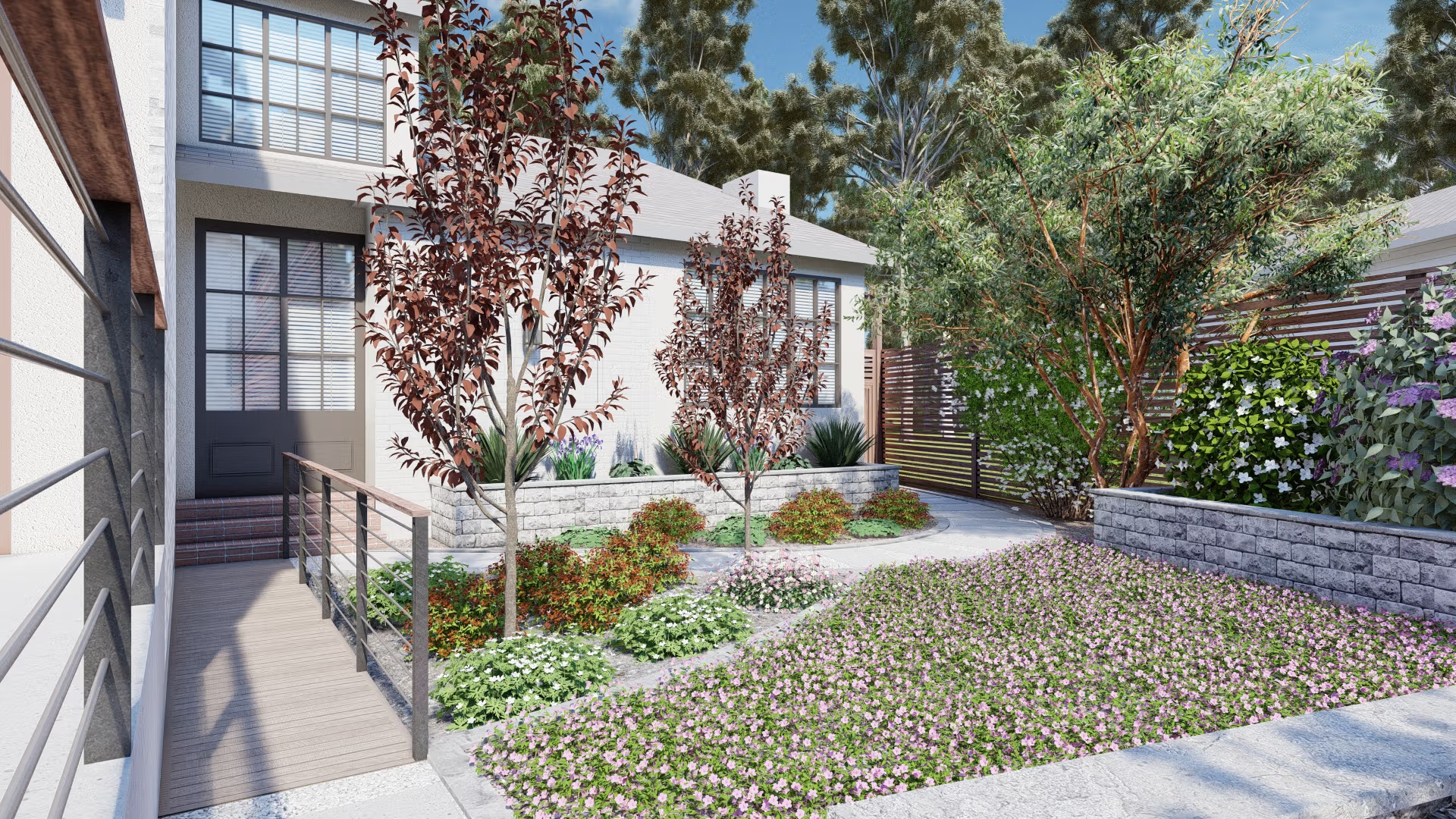
A lush grass front yard has long been the American standard, but many homeowners are starting to realize that they have other options for their yard landscaping. With clever landscape design, you can trade in weekends of mowing, watering, and fertilizing your lawn for time kicking back and relaxing in a landscape that matches your lifestyle.
The Benefits of Reducing Your Grass
The biggest drawback of conventional turf grass lawns is how environmentally unfriendly they are. According to the National Wildlife Federation™, lawns cover approximately 40 million acres in the U.S., and those lawns require an extraordinary amount of resources to stay green and beautiful. In developed areas, between 30% and 60% of a city's water use goes to watering lawns! Keeping those lawns green also requires 67 million pounds of synthetic fertilizers each year which can damage surrounding ecosystems.
Mowing your lawn makes an impact too. Conventional gas-powered mowers can emit as much pollution per hour as 11 cars. If you have a riding mower, the impact is even more severe—as much pollution per hour as 34 cars. The impact doesn't end when your lawn is mowed, either. Yard waste makes up 20% of municipal solid waste, and most of those grass clippings are stuffed into plastic bags and headed to landfills.
In addition, turf grass offers minimal benefit to local ecosystems. It's no surprise given that most of the turf grass species planted in American lawns are actually European species instead of native plants. Turf grass lawns create a vast monoculture that offers little food or shelter for native animals and actually absorbs 10% less water than natural woodlands, contributing to flooding problems in suburban areas.
Reducing the amount of turf grass that you use in your own front yard will help reduce your water bill and your lawn care. More importantly, replacing that grass with more intentional landscaping features will help make every inch of your landscape more beneficial for you and your local ecosystem. Designing sustainable habitats that help wildlife is one of Tilly's priorities with our National Wildlife Federation™ partnership to turn more yards into Certified Wildlife Habitats®.
Now, let's dive into how you can start to make a change in your own back yard with these low-grass and no-grass front yard ideas!
Ground Cover Alternatives to Grass
If you're looking to replace some or all of your current turf grass, there are a range of different ground cover options you can use to fill that niche in your landscaping. From grass-free greenery alternatives to striking swaths of natural stone, you can preserve the wide open feeling that a grass lawn provides without the grass itself.
Living Ground Cover
If you love how vibrant and alive grass is, there are other plants that can become just as beloved (if not more) in your yard. Instead of working to get turf grass to survive in your unique climate, make things easy on yourself by choosing a ground cover plant that's well suited to your temperature, weather, and light conditions.
Clover
Clover actually used to be a very popular American lawn option, but unfortunately it fell out of fashion in the 1950s. Thankfully it's making a comeback both planted solo and mixed into lawn seeding mixtures with grass. Clover is naturally drought tolerant and typically requires no fertilization thanks to its nitrogen-fixing capabilities. While typical turf grass needs regular mowing, pure clover lawns only require mowing a few times a year for light upkeep. Find a variety of clover that works well in your climate, and you'll have an easy-care lawn that's just as soft, lush, and green as the grass you're used to.

Native Grasses
There's also a range of native grasses that you can swap out for traditional turf grass! Choosing native plants for your landscape helps to ensure that these specialized plants will thrive in your unique environment and require less maintenance from you to do so—and your grass is no exception. You can find a whole range of drought-tolerant grasses for arid climates and shade-loving varieties for wooded back yards.
You can opt for low-growing grasses like buffalo grass which look quite a bit like conventional turf grass while offering more benefits to the environment, or go for a more unique turf alternative. Tall prairie grasses make for impressive fans of ornamental grasses, while mondo grass creates small, low-growing clumps for a more open view. Choose one grass that works for you or mix-and-match them with other grass alternatives to creative a dynamic and natural landscape.
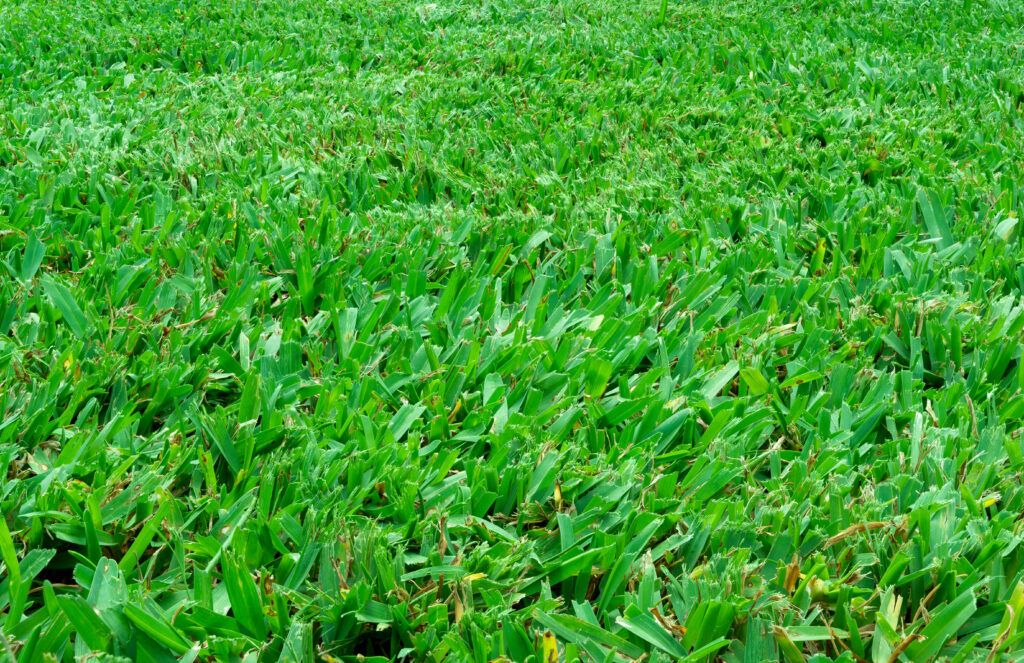
Other Plants
There's a wide range of plants out there which can make great ground cover options, from long vines that will creep across your front yard to soft mosses that will feel right at home in a shade-filled back yard. This variety of flora lets you choose a style that's unique and perfectly suited to your yard! Opt for unobtrusive neutrals for a minimalist design or lead into your cottage-style garden with a lawn of colorful plants that will fill your whole front yard with blooms.
These are some of our favorite ground cover plants that we keep coming back to in our yard landscaping designs:
- Creeping Thyme (zones 4-9)
- Creeping Jenny (zones 4-10)
- Sedum (zones 4-9)
- Creeping Phlox (zones 3-9)
- Miniature Brass Buttons (zones 7-9)
- Common Pratia (zones 6-10)

Hardscape Ground Cover
If your dream yard landscaping ideas look more zero maintenance than low maintenance, replacing your grass with hardscape might just be the way to go. Forget about trying to make grass grow in blazing full sun—once you set gravel in place, you can set it and forget it! You might have to rake it back into place every now and then or top it up after a few years, but the care requirements are nothing like a living lawn.
Hardscape can also be just as beautiful as living softscape! Some people balk at the idea of filling their yard landscape with plain gravel as far as the eye can see, but adding hardscape to your space doesn't have to be so extreme.
Mix different sizes, colors, and textures of stone from ultra-fine decomposed granite to impressive boulders to build a dynamic space. Intersperse trees and shrubs throughout your yard landscaping for a nature-inspired design that feels abundant and alive despite being largely covered in hardscape. You can also mix hardscaped areas with swaths of living ground cover to add visual interest and help to create zones in your landscape design.
Best of all, hardscape is extremely durable. Any areas with heavy foot traffic are the perfect place for hardscaping. Pavers or concrete create an ideal patio area or path. Easy-to-clean gravel is ideal for a dog run. Sand or decomposed granite will perfectly frame an outdoor fire pit. You'll be able to take full advantage of your outdoor living spaces without worrying about damaging your grass.
Hardscape options include:
- Sand
- Decomposed granite
- Pea gravel
- Construction gravel
- River rock
- Mulch
- Poured concrete
- Pavers
- Stepping stones
- Slate
- Larger stones and boulders
Artificial Turf
Artificial grass might have gotten a bad rap, but we're here to tell you that it's come a long way from the painfully spiky fake turf of the 60s. Modern, high quality artificial turf can be just as vibrant and soft as the most lush lawns all year round—meaning no ugly brown lawn when the snow melts in the spring.
Artificial turf may not provide the same benefits to the ecosystem as natural plants do, but it's certainly not without its perks. It stays beautiful for years without all the water and fertilizer natural turf grass would need. It requires no mowing and no carbon emissions after installation is complete. It's water permeable, meaning even heavy rain can drain into the soil just like it should. Once it's too worn out for your lawn, artificial grass can get a second life in dog runs and animal shelters or be returned to many manufacturers to be recycled and reused.
Using faux grass can be a great option for people who love the look of conventional grass but want an alternative that will thrive under extreme conditions. Whether you have no sunlight, extreme droughts, a pack of rambunctious greyhounds who love to run, or a ridiculous water bill you want to bring down, artificial turf could be an ideal grass replacement for you.

Add Landscaping Features to Reduce Grass
Another option to reduce the amount of grass you have in your landscape is to replace some of that lawn area with more functional landscaping features. A wide open lawn can offer open vistas and a place to run and play, but you can get much more than that out of your yard. By replacing parts of that expansive lawn with patios, gardens, pools, and more, you can reduce your turf grass and craft an outdoor living space that perfectly matches your ideal lifestyle.
Garden Beds
There are few upgrades as satisfying as replacing wasteful turf with a garden that can grow you dinner! Whether you prefer flower beds or vegetable gardens, this is the perfect swap for any green thumb.
You can keep your look classic by filling the borders of your lawn space around your fences and your house with planting beds filled with flowers, shrubs, and even ornamental trees. If you want to grow edible plants, raised planting beds might be a good fit for you. A backyard garden design with pea gravel paths between raised beds filled with bountiful seasonal fruits and vegetables combines form and function.
Best of all, these garden beds can be installed over time! Start with adding one garden bed to learn the process and get a realistic expectation of how much garden work you'll have to do. After that, you can expand as much as your heart desires. Add a new bed and new plants each year for a garden that's always growing with you, or keep it simple with a couple of manageable beds planted with reliable perennials.
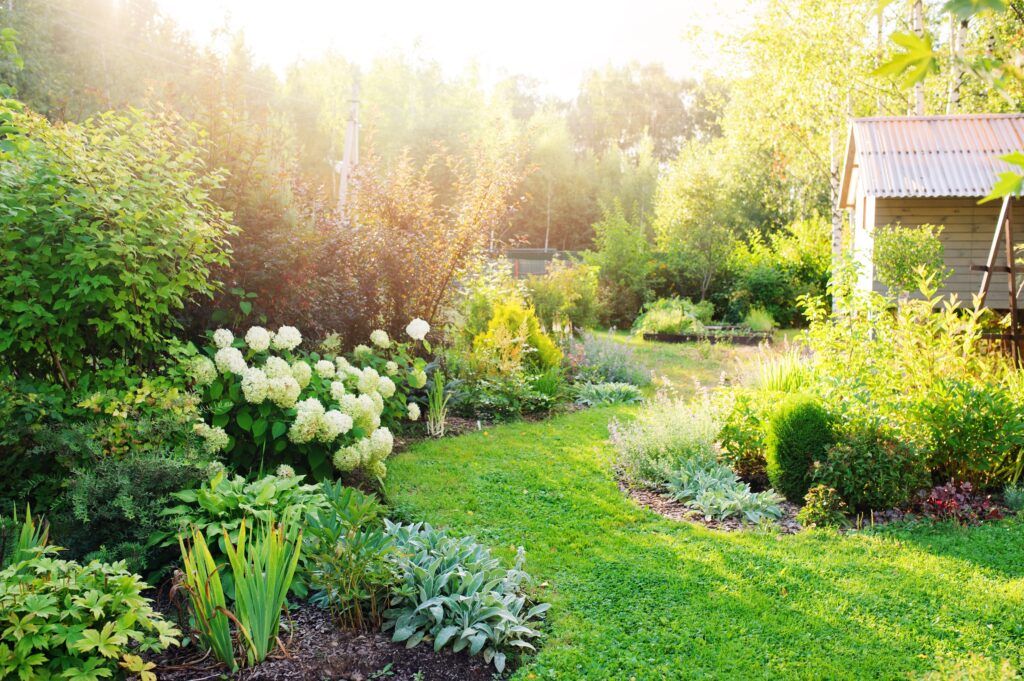
Native Plant Gardens
We already touched on the importance of native plants above, but there are many more native plants you can choose from than just grasses. You can dedicate a section of your yard to recreating a natural landscape, complete with native grasses, flowers, shrubs, and trees. Plant flora of different heights, colors, and textures for a garden display that's natural but artful.
Those native plants will have a major impact on your outdoor space! Native plants typically have low water and fertilizer needs, requiring minimal supplementation beyond what nature provides—which keeps your weekend plans wide open. Even better, these plants provide vital food and habitats for native animals, turning the view out your window into a nature documentary as you watch butterflies hatch and animals hunker down for winter.
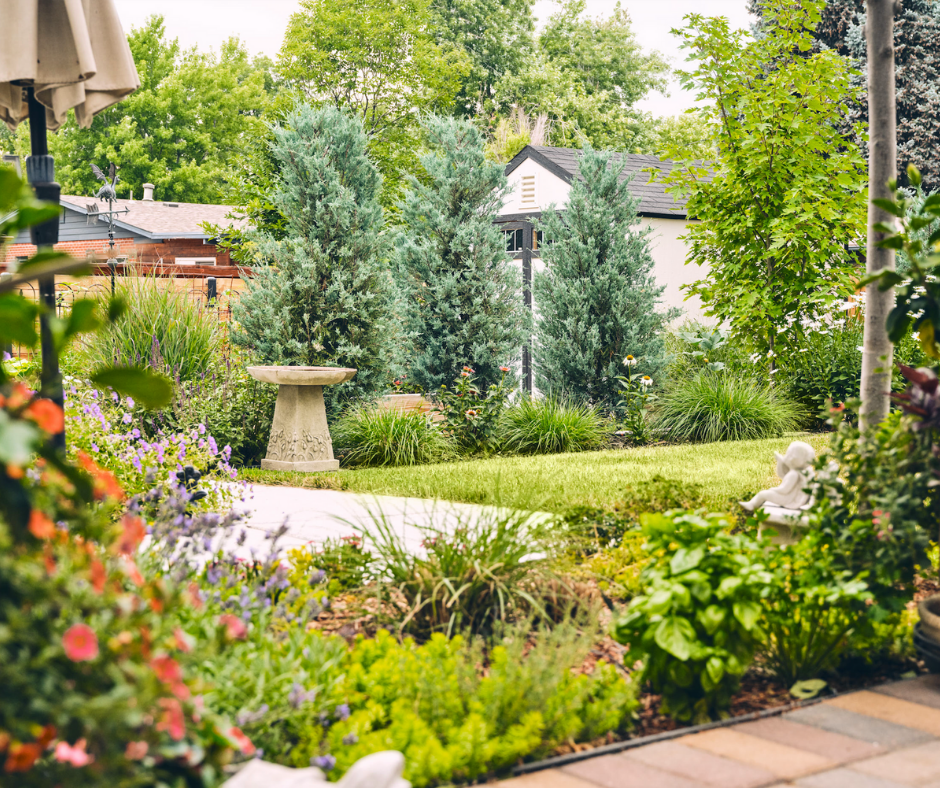
Rock Gardens
Hardscape can become a feature all its own when you combine a variety of stone sizes and textures to create a striking rock garden. Rock is a surprisingly versatile building material, and you can create a rock garden design fit for any landscape style.
A zen garden with large stones set in sand or pea gravel can be at home in both modern and classic designs. A sand pit framed by an array of boulders creates a natural and elegant sandbox and climbing area for kids. A dry creek bed made with river rock and surrounded with native flora adds naturalistic curb appeal to any front yard landscaping.
As an added bonus, any nooks and crannies between the stones in your garden will create cozy shelters for animals looking for a place to bed down for winter, making your rock garden beautiful and beneficial all year round.
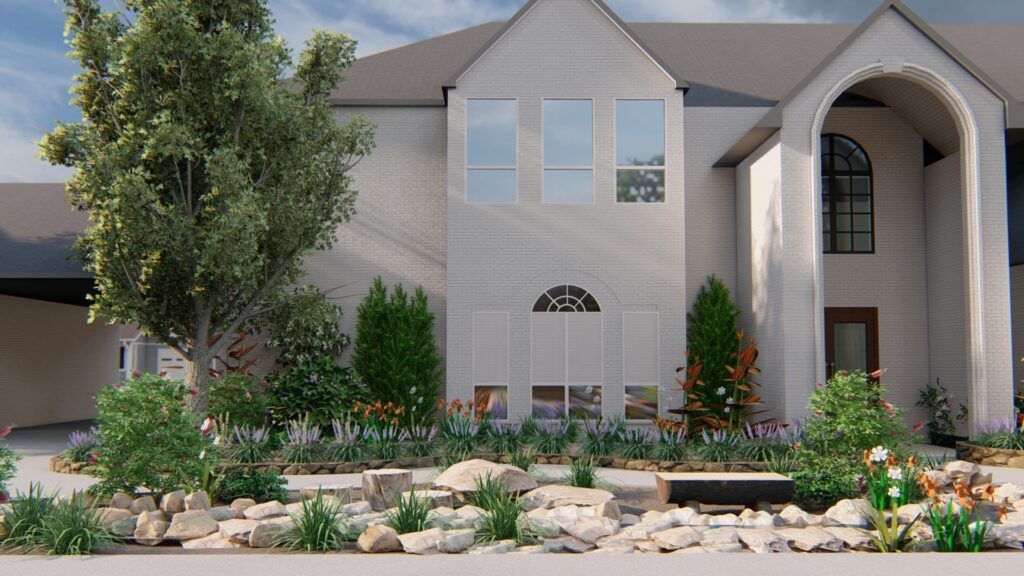
Entertaining Areas
Adding a deck or patio is one of the simplest ways to convert large areas of lawn into high-quality, livable outdoor space. An expansive backyard deck can create the perfect space for eating, lounging, and more. A more petite stone patio makes a dreamy spot for a front yard seating area with a couple of chairs and a table to sit back and sip your morning coffee while enjoying views of your neighborhood.
You can turn these entertaining areas into whatever suits you best. Replacing grass with a concrete, gravel, or stone patio area creates an ideal space for a wide variety of activities. Add a cozy fire pit and seating area to your front yard landscaping. Create a games area where you can pull out your equipment for cornhole or bocce ball on the weekends. Hang up a backyard hammock to rest and relax in. Go big with a full outdoor bar or kitchen for the ultimate backyard entertaining oasis!
The possibilities are only limited by your imagination—but if you're looking for a little more inspiration, we've got a wealth of yard landscaping ideas to get you started.
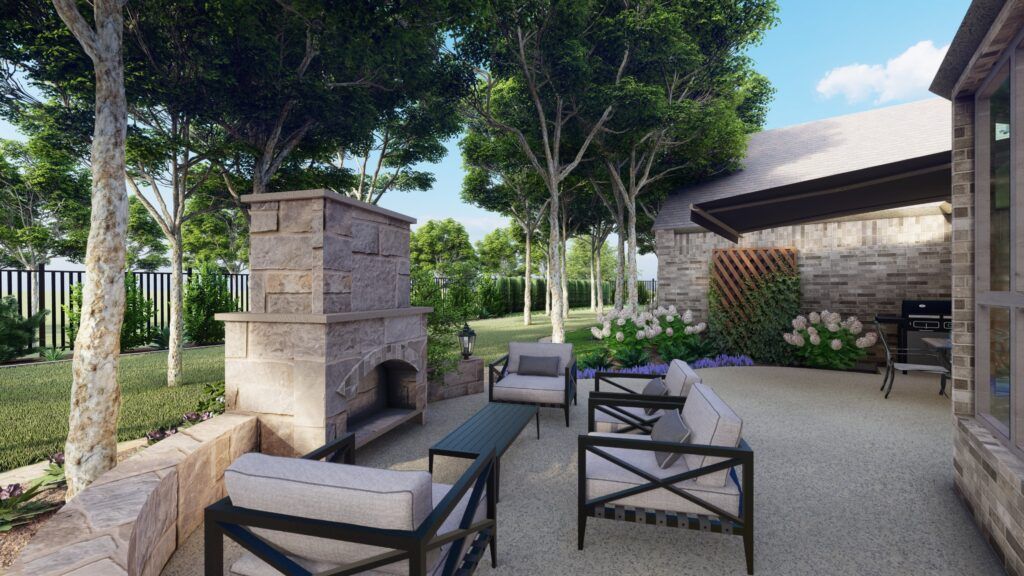
Pathways
Fun features are great, but you can't forget the basics! The flow of a good yard landscape design revolves around how you move from area to area, and you can help to make your yard more functional (and cut down on grass at the same time) by adding pathways into your space.
Make your front yard more welcoming with a stone walkway leading from the sidewalk right to your front door. Add steppingstone paths leading from your backyard patio to your gardens, shed, play areas, and more. Even out-of-the-way areas like your garage door can benefit from having a durable concrete path installed for high-traffic jobs like rolling out the trash cans at night.
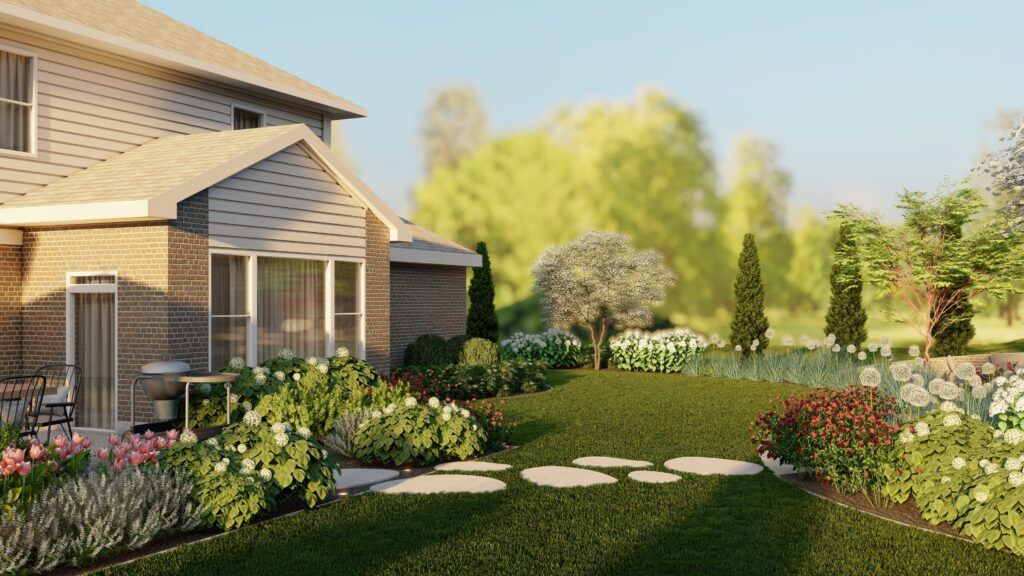
Sustainable Lawn Care Tips
Small changes add up, and it's okay if you don't remove every bit of turf grass from your yard in one fell swoop. Whether you're hoping to have a zero-grass front yard in the future or you want to hold onto a little bit of lawn while reducing your environmental impact, you can make your remaining back or front yard lawn as eco-friendly as possible.
Grow Your Grass Longer
You can probably guess that less frequent mowing means lower emissions and less damage to insects and wildlife, but it has some other surprising benefits. Allowing your grass to grow taller can support a stronger root network, making water use more efficient—and meaning you have to water less. Mow less frequently and don’t clip the grass so low when you do mow to support healthier growth.
Leave Your Grass Clippings
The never-ending cycle of mowing and fertilizing can end right at the source. Leave your grass clippings where they fall and they'll work to fertilize your lawn as they decompose. You'll be reducing waste and not removing any natural nutrients from your lawn. As an added bonus, any grass seed that's left behind will also self-seed, helping to make your lawn thicker with fewer empty patches.

Water Thoughtfully
Watering your lawn in the middle of a hot summer day might seem like a kind way to cool off the grass, but the truth is it doesn't actually help your lawn much. The hot sun is quick to evaporate moisture from the surface of the soil long before it can soak down to the roots.
It's better to water your lawn early in the morning so that it has a chance to absorb the water before the sun evaporates it. For those of you dealing with hot and sunny front yards, take a look at our full guide to watering your grass in hot weather.
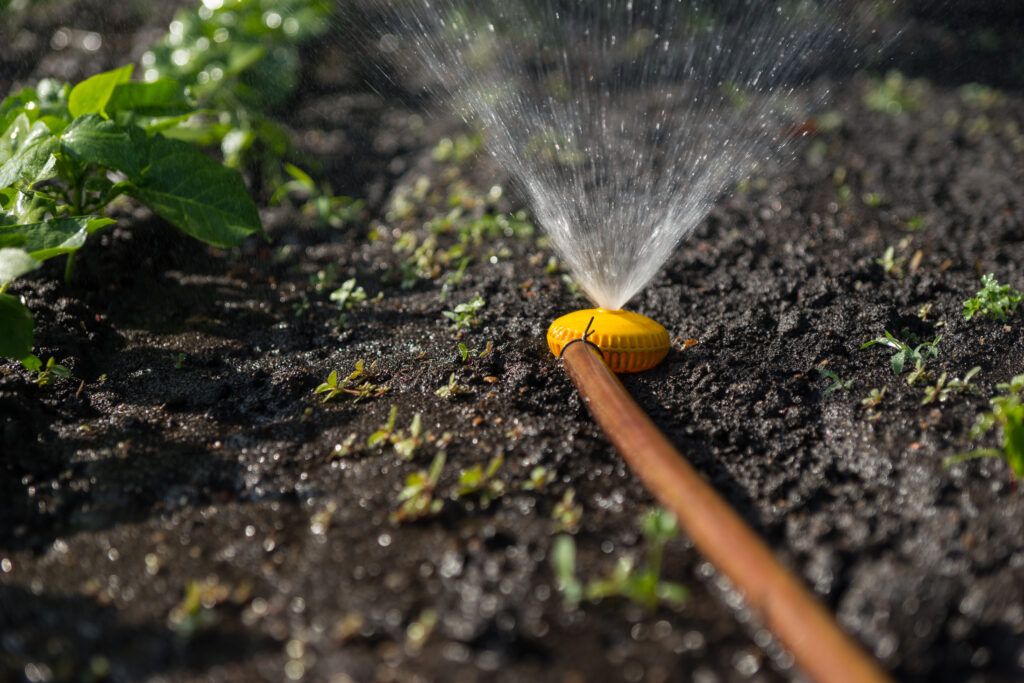
Whether your goal is a low-grass front yard or a fully lawn-free yard landscaping overhaul, we've got your back! Take a look at our design portfolio complete with backyard patios, front yard garden beds, and drought-tolerant landscaping to find even more lawn-minimizing yard landscaping ideas. If you like what you see, let us show you what Tilly can do for you.
Read more about: Landscape Design Tips, Gardening Tips, Sustainable Design